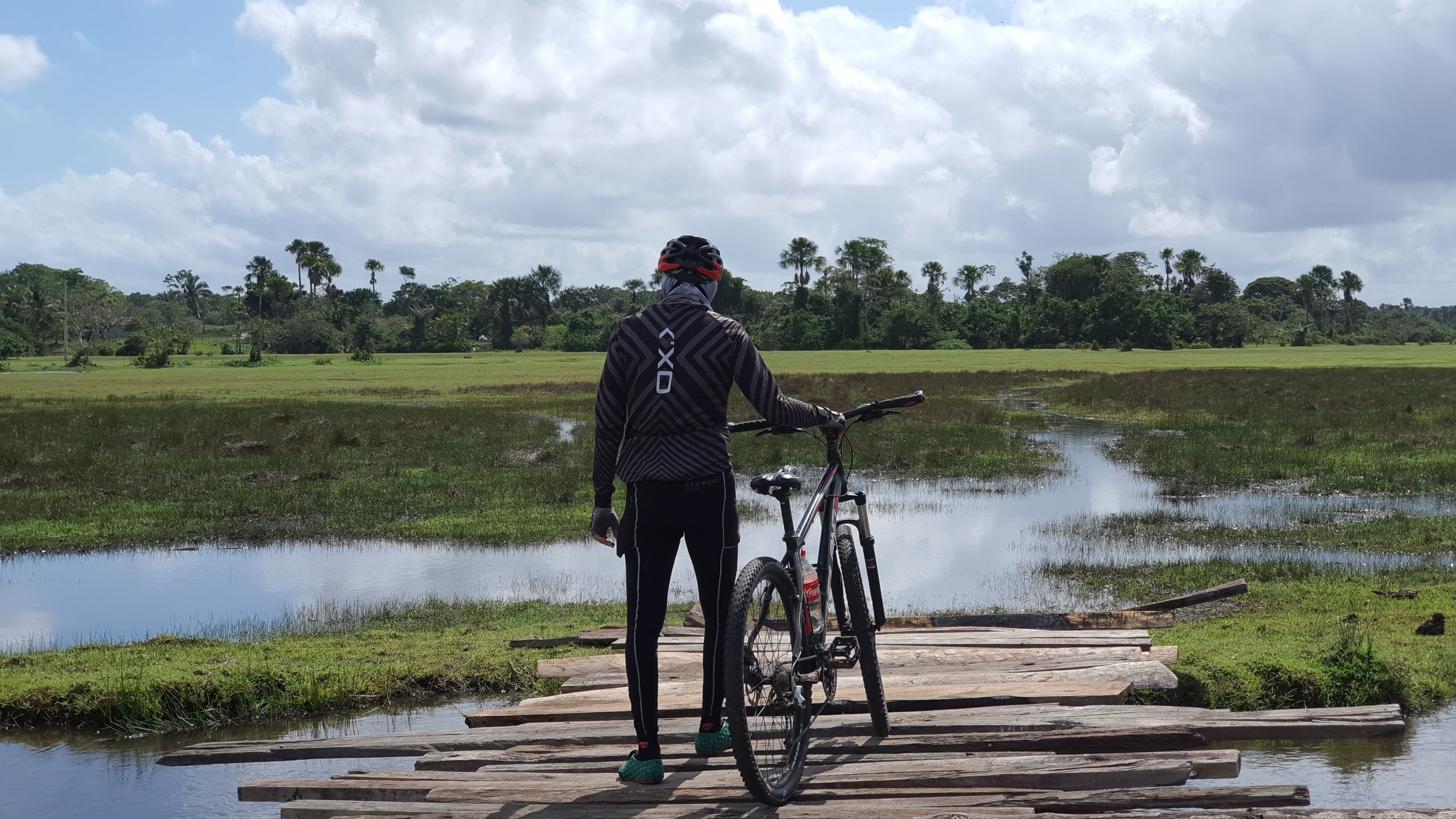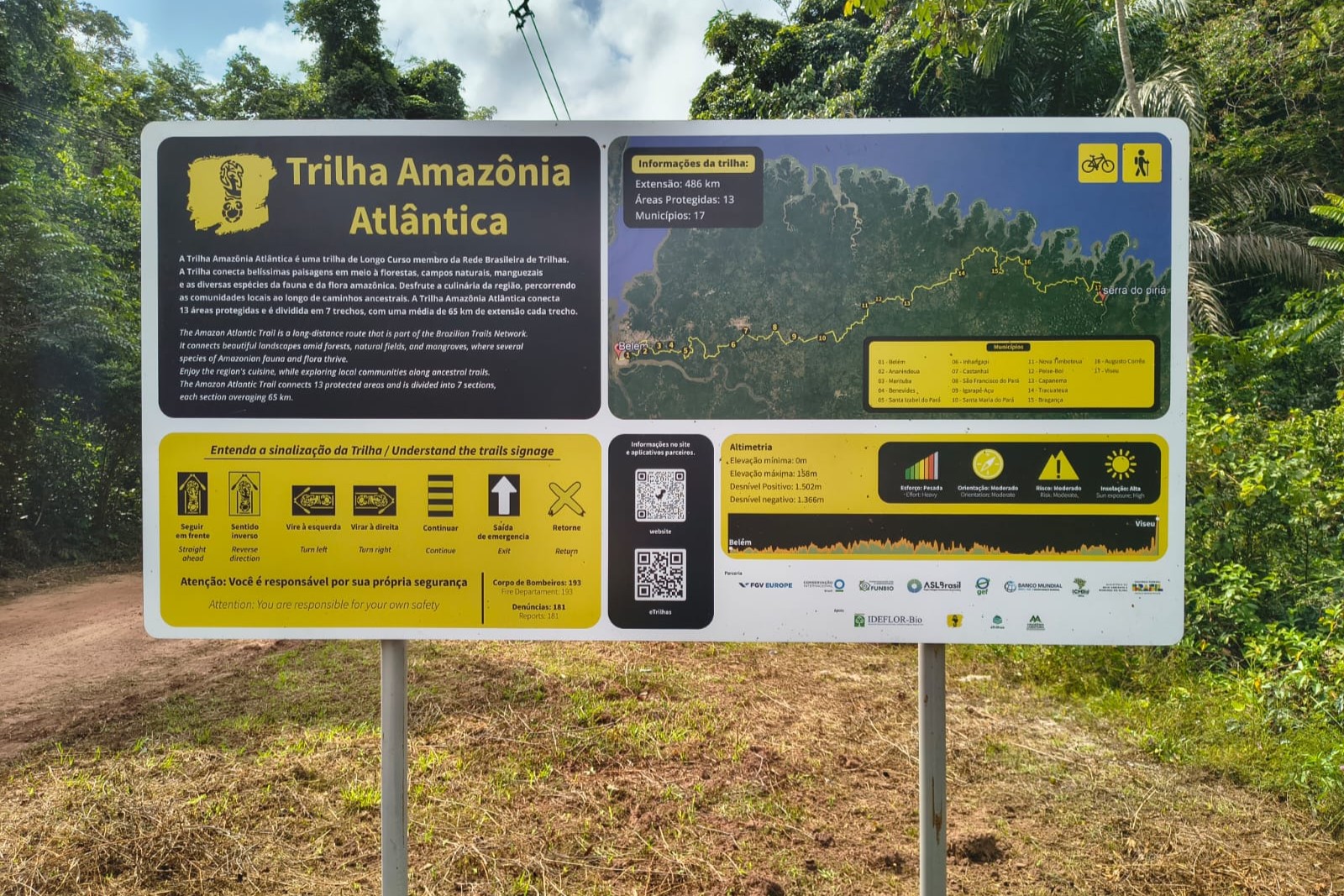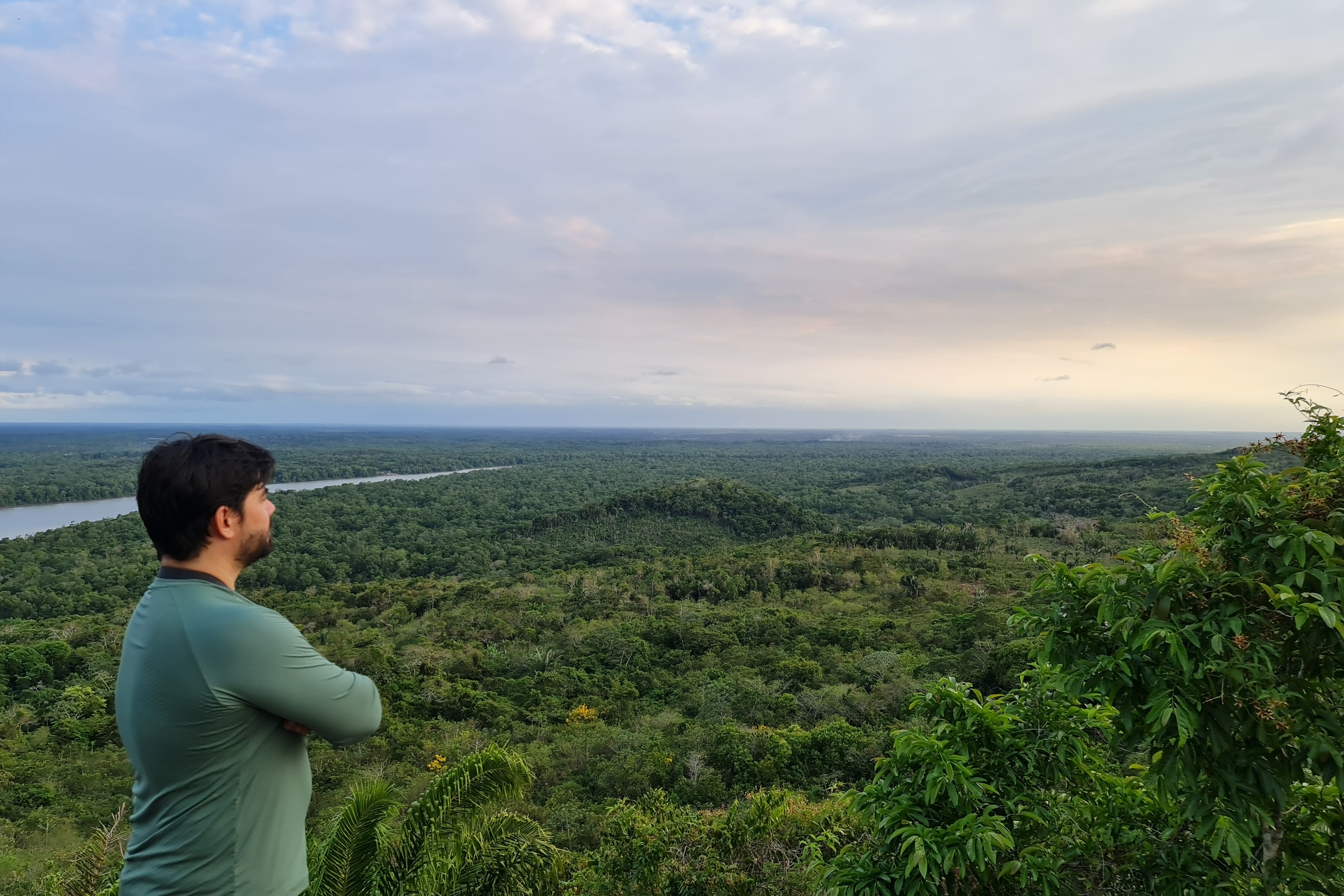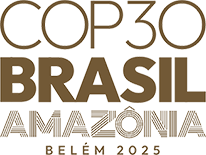Longest waymarked trail in Latin America to be launched at COP30, promoting conservation and development
Trail infrastructure is key to ensuring biodiversity protection in the Amazon while creating new livelihood opportunities for local communities. The initiative is the result of a partnership between Brazilian federal and Pará state governments and civil society

By Laura Marques/COP30
Soon, the Brazilian Amazon will be home to Latin America’s longest waymarked trail: a nearly 460 km crossing the state of Pará. The structuring and waymarking of the Atlantic Amazon Trail (Trilha Amazônia Atlántica) are in their final stage. The official launch will take place during COP30, as part of the Brazilian government’s efforts to combine environmental conservation with job and income generation, as well as recreation.
Previously limited to segments explored mainly by adventurers, the trail can now be traveled in its entirety. The route includes maps, signage, guidance for hikers, and the support of local residents, small service providers, and entrepreneurs trained under the initiative. The trail’s layout was designed to minimize environmental impact, ensuring wildlife mobility while offering visitors an even more attractive experience.
The Ministry of the Environment and Climate Change (Ministério do Meio Ambiente e da Mudança do Clima/MMA) expects that, in its first year of operation, 10,000 people will hike or cycle the trail.
According to Pedro Cunha e Menezes, Director of the Department of Protected Areas at the MMA, international tourists seeking Amazonian trekking experiences often choose Peru, Ecuador, or Colombia, where similar trails are already in place. The aim is to attract part of this international flow while also strengthening domestic tourism.
Mr. Menezes emphasized the importance of connectivity between protected areas: “This policy is helping us create forested corridors between conservation units. These corridors are used for tourism and recreation but also by wildlife to move between conservation areas, enabling their migration.”
Moreover, according to the MMA representative, the creation of the trail is part of the National Network of Long-Distance Trails and Connectivity (RedeTrilhas), which seeks to reconnect Brazilians—most of whom live in urban areas—with nature through participatory management.
“A trail like this is a source of pride and belonging for traditional communities in the Salgado Paraense region, while also offering them new income-generation alternatives alongside their existing traditional activities. The Atlantic Amazon Trail is true community-based tourism, emblematic of President Lula’s government and Minister Marina Silva’s administration,” Mr. Menezes added.
This effort aligns with the Convention on Biological Diversity, to which Brazil is a signatory. The international treaty calls for the conservation and sustainable use of biodiversity and the fair and equitable sharing of benefits from genetic resources.

The route
The trail crosses seven conservation units—the Marine Extractive Reserves of Tracuateua, Caeté-Taperaçu, Araí-Peroba, and Gurupi-Piriá; the Belém Environmental Protection Area; the Metrópole da Amazônia Wildlife Refuge; and the Utinga State Park Camilo Vianna—and six quilombola territories: Torres (Tracuateua), América (Bragança), Pitimandeua (Inhangapi), Macapazinho (Castanhal), Santíssima Trindade (Santa Isabel do Pará), and Macapazinho (Santa Isabel do Pará).

The project was conceived by the Institute of Forest Development and Biodiversity of Pará (IDEFLOR-Bio), which mapped out sections already in use by cyclists. According to Mr. Julio Cesar Meyer, one of the project leaders and current director of the Atlantic Amazon Trail, local communities were also eager to offer better facilities to visitors. This synergy, he stressed, is key to restoring degraded areas.
“These 13 protected areas have become major attractions. Within the logic of ecotourism, people realize they can increase their income through environmental preservation, which encourages both conservation of what still exists and the recovery of what has been lost,” Mr. Meyer said.
Municipalities along the route: Belém → Ananindeua → Marituba → Benevides → Santa Isabel do Pará → Castanhal → Inhangapi → São Francisco do Pará → Igarapé-Açu → Santa Maria do Pará → Nova Timboteua → Peixe-Boi → Capanema → Tracuateua → Bragança → Augusto Corrêa → Viseu.

Tourism
Pedro Cunha e Menezes also highlighted the trail’s wide range of attractions. “The Atlantic Amazon Trail allows visitors to experience the lifestyle of extractive communities—such as crab gatherers, babaçu harvesters, small farmers, and fishers—while also immersing themselves in the Atlantic face of the Amazon: forests, mangroves, open fields, rivers, and varied landscapes, with stunning sunsets. I personally consider it one of the most beautiful trails in Brazil.”
To support visitors, the digital platform eTrilhas launched the Atlantic Amazon Trail project. The company participated in EmbraturLAB’s Sustainable Acceleration Call and was selected among eight solutions presented to an evaluation panel.
Through the eTrilhas app, visitors will be able to connect directly with local service providers. Entrepreneurs, in turn, have their services and products listed on the platform to offer to tourists. Access to this showcase of opportunities will also be available via QR codes displayed at registered establishments.

Collective efforts
The project is the result of a joint effort between traditional communities, volunteers, the MMA, the Ministry of Tourism (Ministério do Turismo/MTur), the Brazilian Agency for International Tourism Promotion (Agência Brasileira de Promoção Internacional do Turismo/Embratur), the Instituto Chico Mendes Institute for Biodiversity Conservation (Instituto Chico Mendes de Conservação da Biodiversidade/ICMBio), the IDEFLOR-Bio Institute, and Conservation International (CI).
English version: Trad. Bárbara Menezes.
Proofreading by Enrique Villamil.
